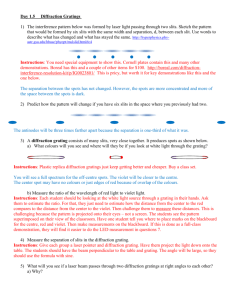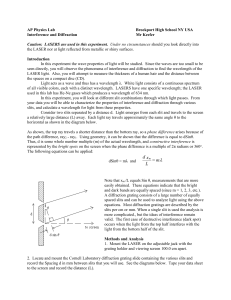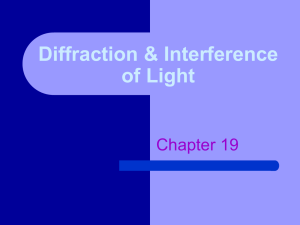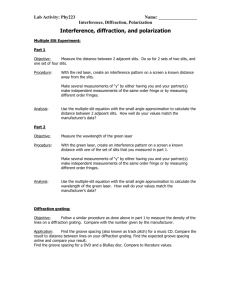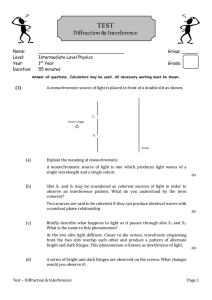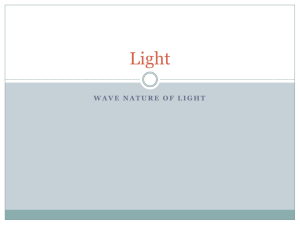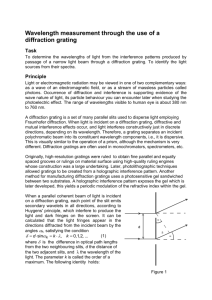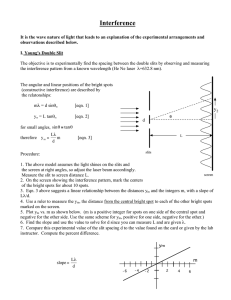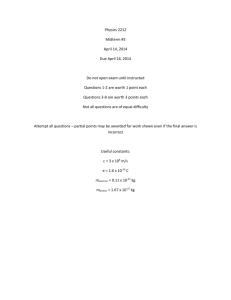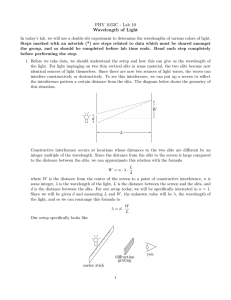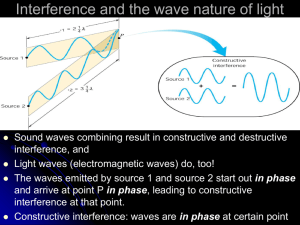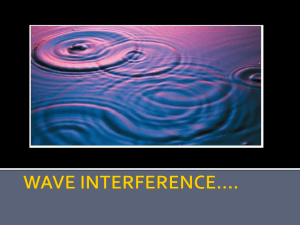Physics 212 HW17 - University of St. Thomas
advertisement
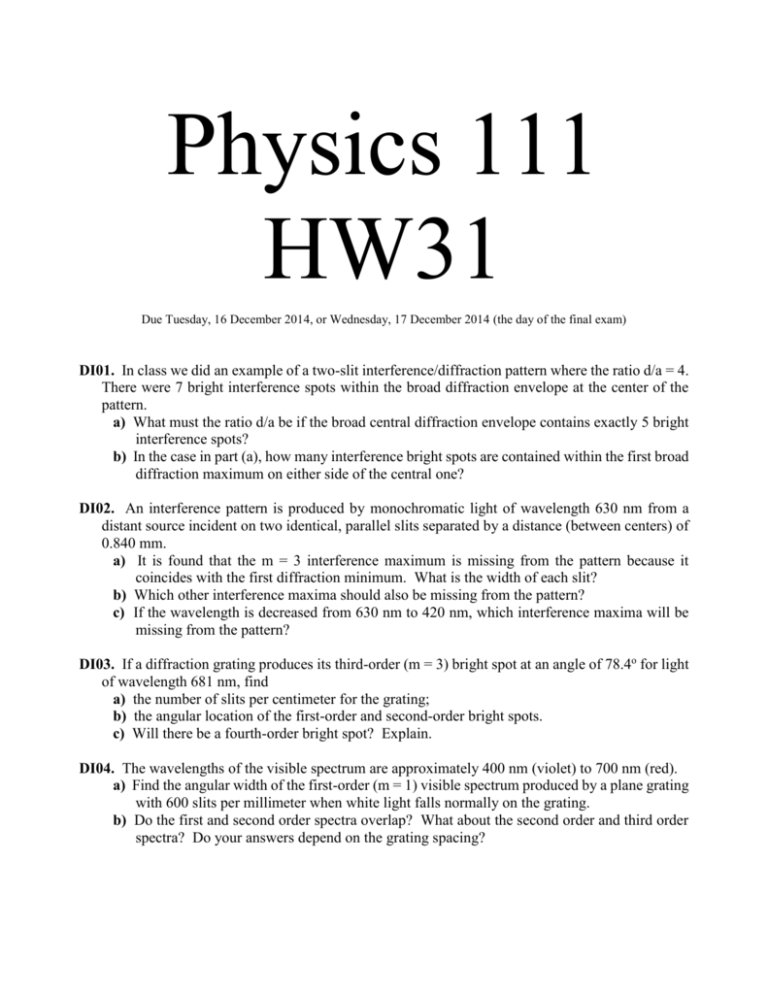
Physics 111 HW31 Due Tuesday, 16 December 2014, or Wednesday, 17 December 2014 (the day of the final exam) DI01. In class we did an example of a two-slit interference/diffraction pattern where the ratio d/a = 4. There were 7 bright interference spots within the broad diffraction envelope at the center of the pattern. a) What must the ratio d/a be if the broad central diffraction envelope contains exactly 5 bright interference spots? b) In the case in part (a), how many interference bright spots are contained within the first broad diffraction maximum on either side of the central one? DI02. An interference pattern is produced by monochromatic light of wavelength 630 nm from a distant source incident on two identical, parallel slits separated by a distance (between centers) of 0.840 mm. a) It is found that the m = 3 interference maximum is missing from the pattern because it coincides with the first diffraction minimum. What is the width of each slit? b) Which other interference maxima should also be missing from the pattern? c) If the wavelength is decreased from 630 nm to 420 nm, which interference maxima will be missing from the pattern? DI03. If a diffraction grating produces its third-order (m = 3) bright spot at an angle of 78.4o for light of wavelength 681 nm, find a) the number of slits per centimeter for the grating; b) the angular location of the first-order and second-order bright spots. c) Will there be a fourth-order bright spot? Explain. DI04. The wavelengths of the visible spectrum are approximately 400 nm (violet) to 700 nm (red). a) Find the angular width of the first-order (m = 1) visible spectrum produced by a plane grating with 600 slits per millimeter when white light falls normally on the grating. b) Do the first and second order spectra overlap? What about the second order and third order spectra? Do your answers depend on the grating spacing?



